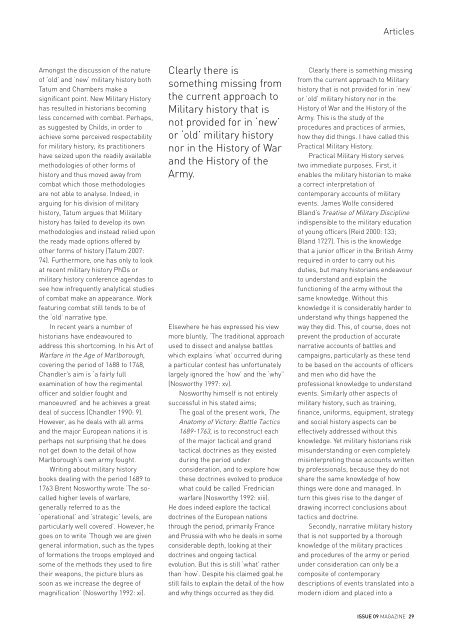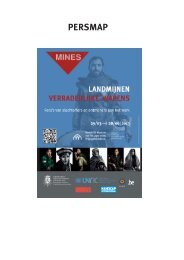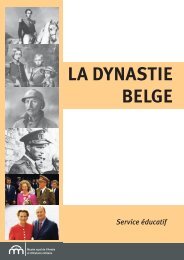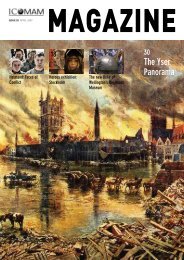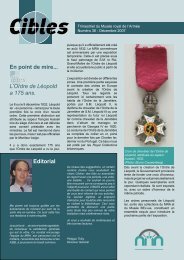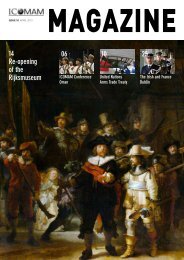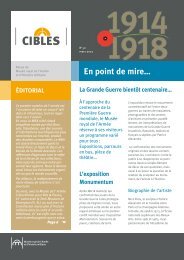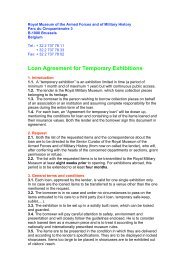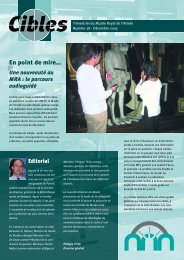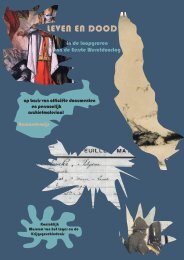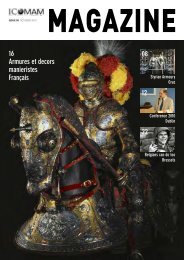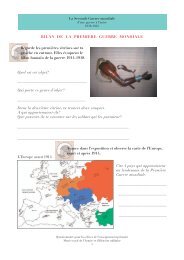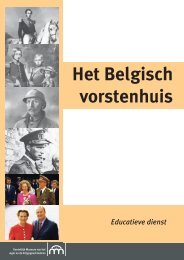Download issue 09 (High resolution) Februari 2012 (PDF 5,26 MB)
Download issue 09 (High resolution) Februari 2012 (PDF 5,26 MB)
Download issue 09 (High resolution) Februari 2012 (PDF 5,26 MB)
- No tags were found...
Create successful ePaper yourself
Turn your PDF publications into a flip-book with our unique Google optimized e-Paper software.
ArticlesAmongst the discussion of the natureof ‘old’ and ‘new’ military history bothTatum and Chambers make asignificant point. New Military Historyhas resulted in historians becomingless concerned with combat. Perhaps,as suggested by Childs, in order toachieve some perceived respectabilityfor military history, its practitionershave seized upon the readily availablemethodologies of other forms ofhistory and thus moved away fromcombat which those methodologiesare not able to analyse. Indeed, inarguing for his division of militaryhistory, Tatum argues that Militaryhistory has failed to develop its ownmethodologies and instead relied uponthe ready made options offered byother forms of history (Tatum 2007:74). Furthermore, one has only to lookat recent military history PhDs ormilitary history conference agendas tosee how infrequently analytical studiesof combat make an appearance. Workfeaturing combat still tends to be ofthe ‘old’ narrative type.In recent years a number ofhistorians have endeavoured toaddress this shortcoming. In his Art ofWarfare in the Age of Marlborough,covering the period of 1688 to 1748,Chandler’s aim is ‘a fairly fullexamination of how the regimentalofficer and soldier fought andmanoeuvred’ and he achieves a greatdeal of success (Chandler 1990: 9).However, as he deals with all armsand the major European nations it isperhaps not surprising that he doesnot get down to the detail of howMarlborough’s own army fought.Writing about military historybooks dealing with the period 1689 to1763 Brent Nosworthy wrote ‘The socalledhigher levels of warfare,generally referred to as the‘operational’ and ‘strategic’ levels, areparticularly well covered’. However, hegoes on to write ‘Though we are givengeneral information, such as the typesof formations the troops employed andsome of the methods they used to firetheir weapons, the picture blurs assoon as we increase the degree ofmagnification’ (Nosworthy 1992: xi).Clearly there issomething missing fromthe current approach toMilitary history that isnot provided for in ‘new’or ‘old’ military historynor in the History of Warand the History of theArmy.Elsewhere he has expressed his viewmore bluntly, ‘The traditional approachused to dissect and analyse battleswhich explains ‘what’ occurred duringa particular contest has unfortunatelylargely ignored the ‘how’ and the ‘why’’(Nosworthy 1997: xv).Nosworthy himself is not entirelysuccessful in his stated aims;The goal of the present work, TheAnatomy of Victory: Battle Tactics1689-1763, is to reconstruct eachof the major tactical and grandtactical doctrines as they existedduring the period underconsideration, and to explore howthese doctrines evolved to producewhat could be called ‘Fredricianwarfare (Nosworthy 1992: xiii).He does indeed explore the tacticaldoctrines of the European nationsthrough the period, primarily Franceand Prussia with who he deals in someconsiderable depth, looking at theirdoctrines and ongoing tacticalevolution. But this is still ‘what’ ratherthan ‘how’. Despite his claimed goal hestill fails to explain the detail of the howand why things occurred as they did.Clearly there is something missingfrom the current approach to Militaryhistory that is not provided for in ‘new’or ‘old’ military history nor in theHistory of War and the History of theArmy. This is the study of theprocedures and practices of armies,how they did things. I have called thisPractical Military History.Practical Military History servestwo immediate purposes. First, itenables the military historian to makea correct interpretation ofcontemporary accounts of militaryevents. James Wolfe consideredBland’s Treatise of Military Disciplineindispensible to the military educationof young officers (Reid 2000: 133;Bland 1727). This is the knowledgethat a junior officer in the British Armyrequired in order to carry out hisduties, but many historians endeavourto understand and explain thefunctioning of the army without thesame knowledge. Without thisknowledge it is considerably harder tounderstand why things happened theway they did. This, of course, does notprevent the production of accuratenarrative accounts of battles andcampaigns, particularly as these tendto be based on the accounts of officersand men who did have theprofessional knowledge to understandevents. Similarly other aspects ofmilitary history, such as training,finance, uniforms, equipment, strategyand social history aspects can beeffectively addressed without thisknowledge. Yet military historians riskmisunderstanding or even completelymisinterpreting those accounts writtenby professionals, because they do notshare the same knowledge of howthings were done and managed. Inturn this gives rise to the danger ofdrawing incorrect conclusions abouttactics and doctrine.Secondly, narrative military historythat is not supported by a thoroughknowledge of the military practicesand procedures of the army or periodunder consideration can only be acomposite of contemporarydescriptions of events translated into amodern idiom and placed into aISSUE <strong>09</strong> MAGAZINE 29


